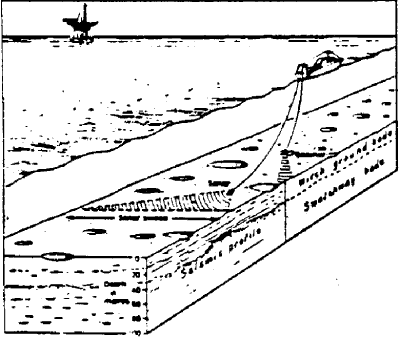Moon-like craters in the north sea floor
During the exploitation of the North Sea oil fields, geophysicists made detailed surveys of sea-floor topography with seismic instruments called boomers. They were startled to discover thousands of elliptical craters or pockmarks in the sediments. The craters are 30-330 feet across, 6-25 feet deep, and located in water about 500 feet deep. The long axes of the craters point roughly in the same direction; and the craters tend to be arranged in lines. The authors suggest that escaping subsurface gases and fluids may have formed the unusual structures. The possibility was underscored on July 30, 1978, when a very large eruption of sediment was detected by sonar.
(McQuillin, Robert, and Fannin, Nigel; "Explaining the North Sea's Lunar Floor," New Scientist, 83:90, 1979.)
Comment. The North Sea is a prime habitat of mistpouffers (sea-associated booming sounds). There might be a correlation here between natural-gas eruptions and these strange booming sounds. Also, the crude similarity of these sea-floor craters to the Carolina Bays should not be passed over.
Reference. All types of unusual craters are cataloged in Section ETC in: Carolina Bays, Mima Mounds. For ordering information, visit: here.

